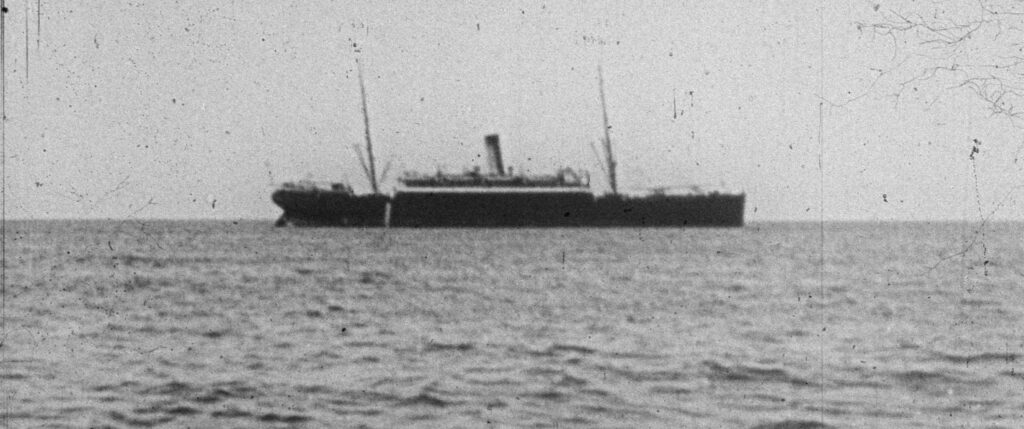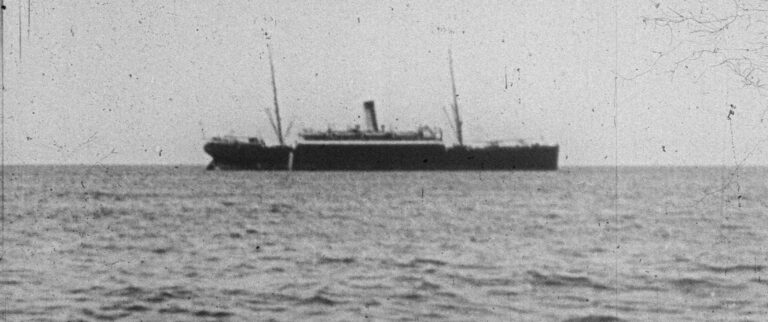Below are some questions posed to director Noah Teichner about his competition film Navigators.
What kind of work have you done on archive materials for your film?
All of the archival materials in Navigators were (re)filmed and developed on 16mm and 35mm film at the artist-run film lab L’Abominable in the Paris region. I used an optical printer to rework footage from Buster Keaton’s The Navigator (1924) and other Keaton films and slapstick comedies of the era. I collected 16mm and Super 8 prints of these films that I slowed down through step printing (reshooting each frame 4, 8, 24, etc. times). In some cases, I also reframed the footage or magnified details: this was most notably the case with the newsreel footage of the deportees leaving for Ellis Island in December 1919 (from a 35mm archival print loaned by Library and Archives Canada).
With an overhead rostrum camera and 16mm color film, I also shot first-edition books, newspapers, postcards, sheet music, and various ephemera that I collected during my research on both the “Soviet Ark” deportation and the First Red Scare in the United States. Additional digitally-sourced archives were also transferred to 16mm film using black and white stock. As for the film’s soundtrack, it was created by slowing down and remixing 78 rpm records, most of which date from the period of the First Red Scare (1919-1920).
The film takes time to analyze details through the juxtaposition of images and various archival materials, from books and photos to the soundtrack. Can you describe the cinematic form you wanted to convey through your film?
I approached the widescreen Scope frame of Navigators as a sort of research interface capable of bringing together a diversity of materials—from the letterpress-printed intertitles and notes that structure the film to the reworked footage and historical documents. The two-screen format that occasionally switches to full-screen Scope is inspired by both the long history of film-based experimental works that use double projection and various analog and digital interfaces for collecting and analyzing archival materials.
I also tried to explore the graphic and narrative possibilities of on-screen text by playing with the codes of both silent-film intertitles and historiographic research. Personally, I find it much more engaging for the first-person accounts of Alexander Berkman and Emma Goldman to take the form of intertitles rather than voice-overs. It is the spectator who must give voice to the film’s protagonists. The footnotes are another way that I tried to incite the audience to engage with the film’s historical materials, albeit in a more analytical mode.
Would you suggest to young people and to a new audience a few titles of found footage and/or experimental films that have been pivotal for your education and training?
Seeing a complete retrospective of the films of artist-collector Joseph Cornell when I was a teenager left a big mark on me. Morgan Fisher’s Standard Gauge (1984), which approaches collecting from a completely different angle compared to Cornell, was another pivotal work. The playful take on the writing of history in The Song of the Shirt (Sue Clayton & Jonathan Curling, 1979), which I saw early on in the stages of making Navigators, had an influence as well.

